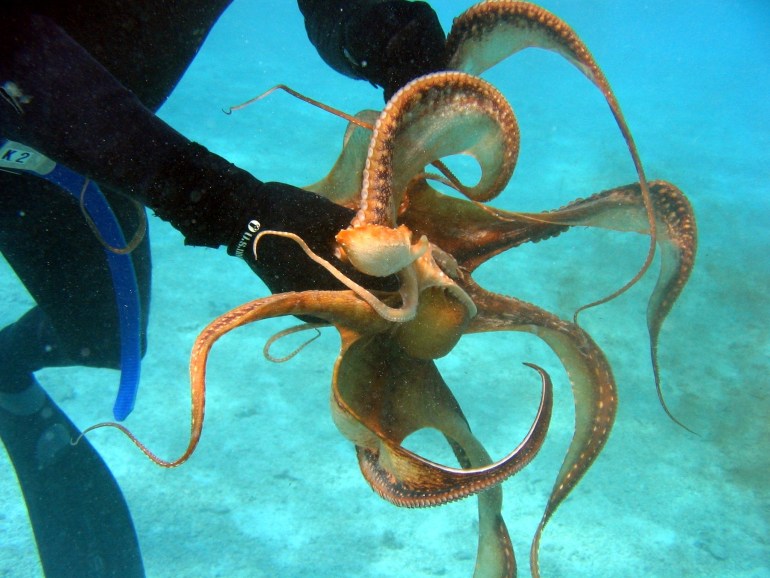Many animal species die after they reproduce, but for octopus mothers, it's puzzling, worrying, and different.
In most species, when female octopus eggs are close to hatching, she stops eating and becomes intent on self-destruction, and she may smash herself into a rock and tear off her skin or even eat pieces of her arms.
And researchers have discovered in a study, whose results were published on May 12 in the journal Current Biology, that chemicals seem to control this deadly frenzy.
After the octopus lays its eggs, it undergoes changes in the production and use of cholesterol in its body, which leads to an increase in its production of steroid hormones, a biochemical shift that will kill it.
programmed to die
I was stunned by the dramatic death of octopus mothers after they laid their eggs, Z. Yan Wang, associate professor of psychology and biology at the University of Washington, reports for Live Science.
No one knew the purpose of this behavior.
Theories include the idea that dramatic death displays lure predators away from the eggs, or that the mother's body releases nutrients into the water that nourishes the eggs.
Wang adds that a mother's death likely protects children from the older generation;
Octopuses are carnivores and if older octopuses get stuck nearby they might end up eating all of each other's young.
A 1977 study by Jerome Wodensky, a psychologist at Brandeis University, found that the mechanism behind this mother octopus' self-destruction lies in the optic glands, a group of glands near the octopus's eye roughly equivalent to the pituitary gland in humans.
It seems that the chemicals produced by the octopus are controlling its death frenzy (Pixaby)
Woodinsky found that if the optic gland nerves were cut, mother octopuses would shed their eggs, start eating again, and live for another 4 to 6 months.
This is an impressive lifespan for organisms that only live about a year old.
But no one knew what the visual gland was doing to control this streak of self-harm.
“From the beginning, I was really keen to do the experiments that we outlined in the paper we just published, which is basically squeezing the visual gland and then identifying the components of that juice,” says Wang.
So Wang and her colleagues analyzed the chemicals produced in the visual glands of California "two-spot" octopuses (bimaculoides) after they had laid eggs.
A genetic analysis of the same species, conducted in 2018, showed that after the eggs were laid, the genes in the optic glands that produce steroid hormones, which are partly made up of cholesterol components, began to increase their activity.
This study was used as a guideline, as the scientists focused on the stimulants and related chemicals produced by the visual glands in the two-spot octopus.
3 separate chemical seizures occur while the mother octopus lays her eggs (pixabi)
fatal changes
Wang found 3 separate chemical spells that occurred around the time a mother octopus laid her eggs.
The first was an increase in pregnenolone and progesterone, two hormones associated with reproduction in a group of organisms.
In humans, for example, progesterone rises during ovulation and during early pregnancy.
The second transformations were even more surprising. Mother octopuses began producing higher levels of cholesterol called 7-dehydrocholesterol, or DHC-7.
Humans produce DHC-7 during cholesterol production as well, but they don't keep it in their systems for long because the compound is toxic.
In fact, children born with the genetic disorder Smith-Lemli-Opitz syndrome cannot get rid of DHC-7.
The result is intellectual disability, behavioral problems including self-harm, physical deformities such as extra fingers and toes, and cleft palate.
The optic glands of the mother octopus produce more bile acid components (pixels)
Finally, the optic glands also began to produce more components of bile acids, which are acids produced by the liver in humans and other animals.
Octopuses don't produce the same type of bile acids as mammals, but they seem to make the building blocks for those bile acids.
The components of bile acid are interesting, says Wang, because a similar group of acids has been shown to control the life span of the worm Caenorhabditis elegans, which is often used in scientific research because of its simplicity.
Thus bile acid components may be important for controlling longevity across invertebrate species.

